Alexandrine Parrot
Alexandrine Parrot
Publié par Angélique le Tuesday 9 April 2024

The Alexandrine Parrot is a species of bird in the psittacine family. It was named in memory of Emperor Alexander the Great who had it exported to various countries and regions in Europe and the Mediterranean.
It is mainly green although its cheeks and neck have blue-gray highlights. The abdomen is yellowish-green, the upper part of the central tail feathers is bluish-green with yellow tips, the outer tail feathers are green while the underside of the tail is yellow. Adult males (over 3 years old) have a black collar in each of the subspecies. Adult females (over 3 years old) often exhibit a light to medium gray collar shading.
In the wild, this bird consumes seeds, nuts, fruits, berries, buds, flowers and nectars. It also causes considerable damage to grain, rice, corn and fruit crops. Its status is almost threatened.
Retour au blog Partager : Facebook Twitter
Northern pintail
Publié par Angélique le Friday 20 September 2019
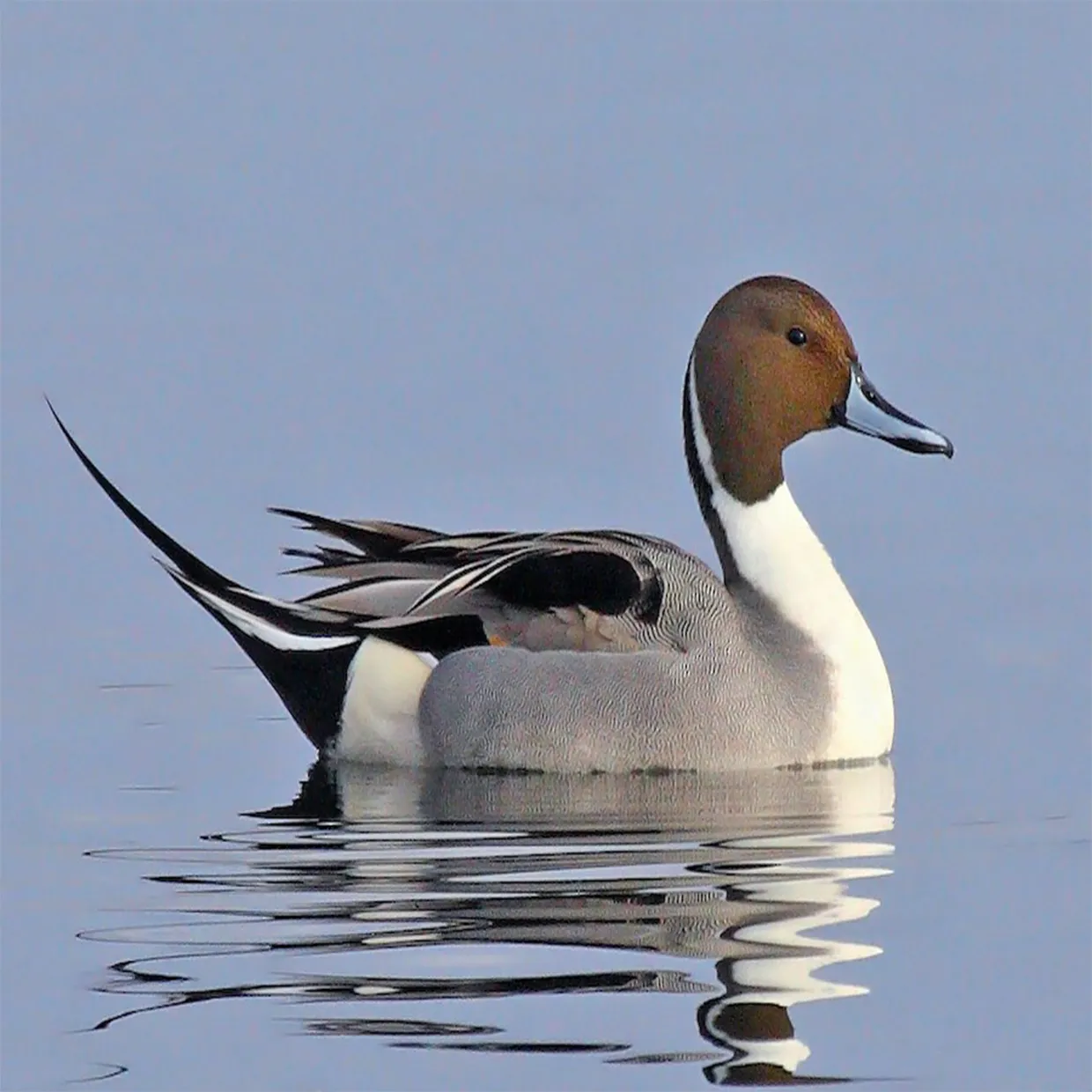
The Northern Pintail is a duck of the Anatidae family.
The adult male can be recognized at first glance. Its chocolate-brown head is marked at the back by a white line that runs up the side of the neck. The hindquarters are clearly two-tone, creamy-white and black, with a clear vertical separation. The long, pointed tail is two-tone, white with black stripes.
The adult female, like other female ducks, has discreet brown plumage. It can be recognized by its slender silhouette, reminiscent of the male, long, slender neck and long, pointed tail. The distinctly russet head and steel-gray bill are good identification criteria. The rest of the plumage is all shades of brown.
The Northern Pintail is a species that breeds at high latitudes on the North American and Eurasian continents.
The pintail is still one of the most numerous duck species, and as such is not threatened.
Retour au blog Partager : Facebook Twitter
Common shelduck
Publié par Angélique le Friday 20 September 2019
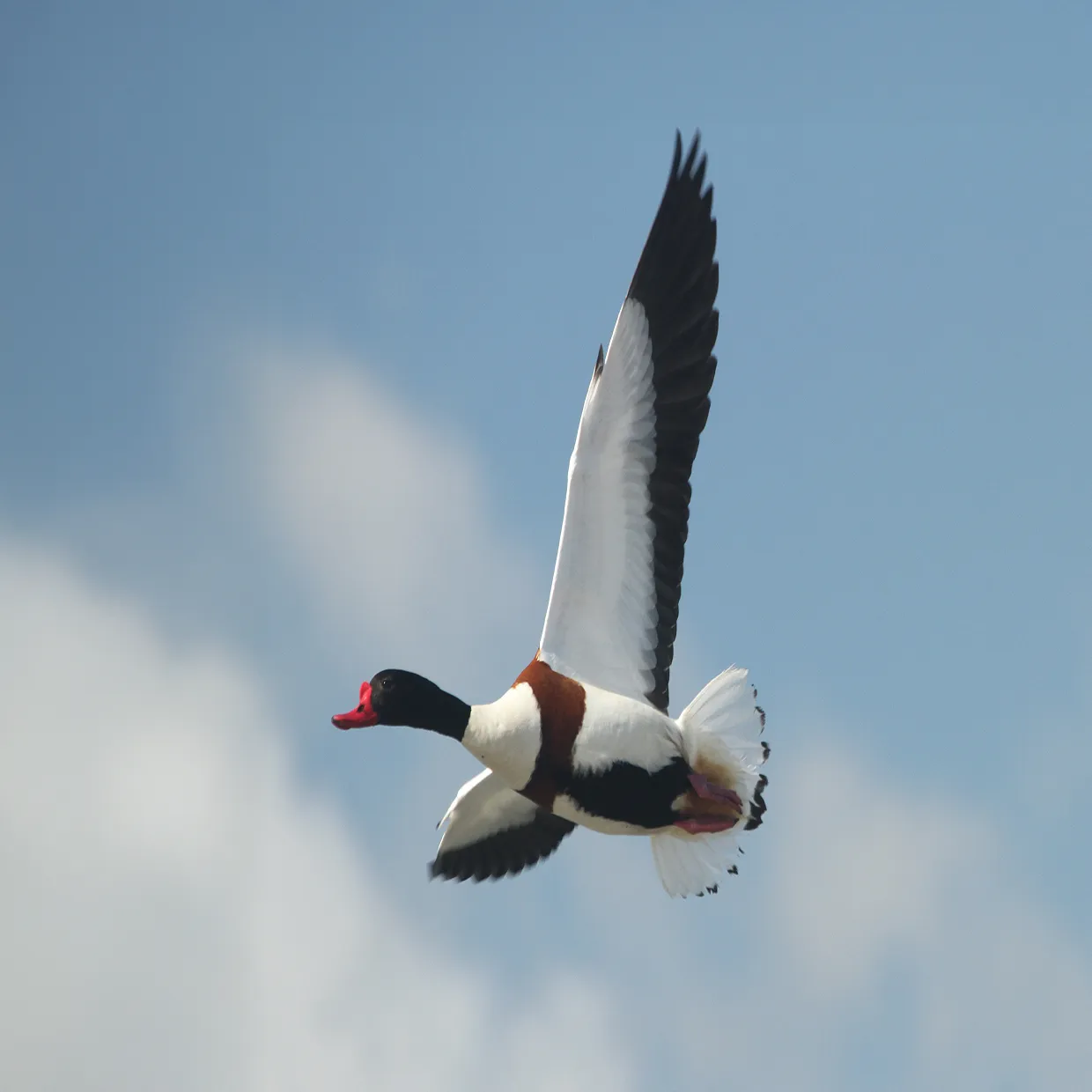
This duck is a member of the Anatidae family. Like other species of the Tadorne genus, they bear an uncanny resemblance to geese.
Males and females have slight differences. The male has a greenish-black head and a red beak with a similarly colored protrusion, an important visual sexual characteristic during courtship.
The female is almost as colorful as the male (a feature made possible by her brooding under cover, in burrows) and has no hump on her beak, which is often more marked with black. Adults have pink legs.
The Shelduck is widespread in Scandinavia, the British Isles, Tunisia and even eastern China. There are permanent breeding grounds in the Caucasus.
In France, it can be found in Picardy, Normandy and Brittany, in Charente-Maritime as well as in Languedoc Roussillon and the Camargue.
The shelduck’s diet consists mainly of gastropods, but also includes other prey such as crustaceans and worms.
This species is protected by the decree of 17/04/81.
Retour au blog Partager : Facebook Twitter
Sun conure
Publié par Angélique le Tuesday 19 February 2019
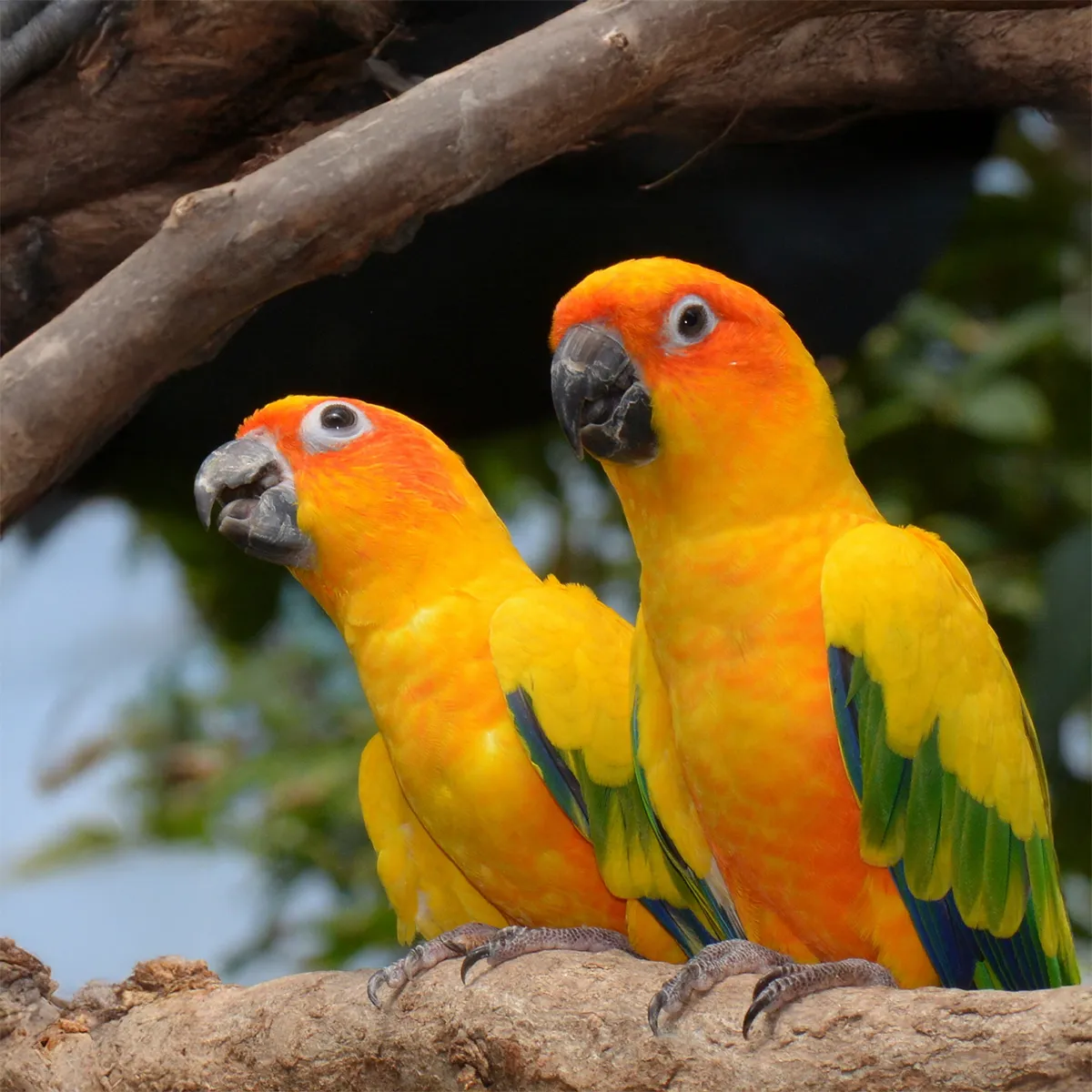
The sun conure is a bird belonging to the psittacidae family. It is native to Brazil and Guyana. It is found in very open secondary forests, wooded savannahs and palm groves. It feeds on fruits, nuts, seeds and flowers. It is listed in Appendix II of the Washington Convention.
Retour au blog Partager : Facebook Twitter
Red-fronted macaw
Publié par Angélique le Tuesday 19 February 2019
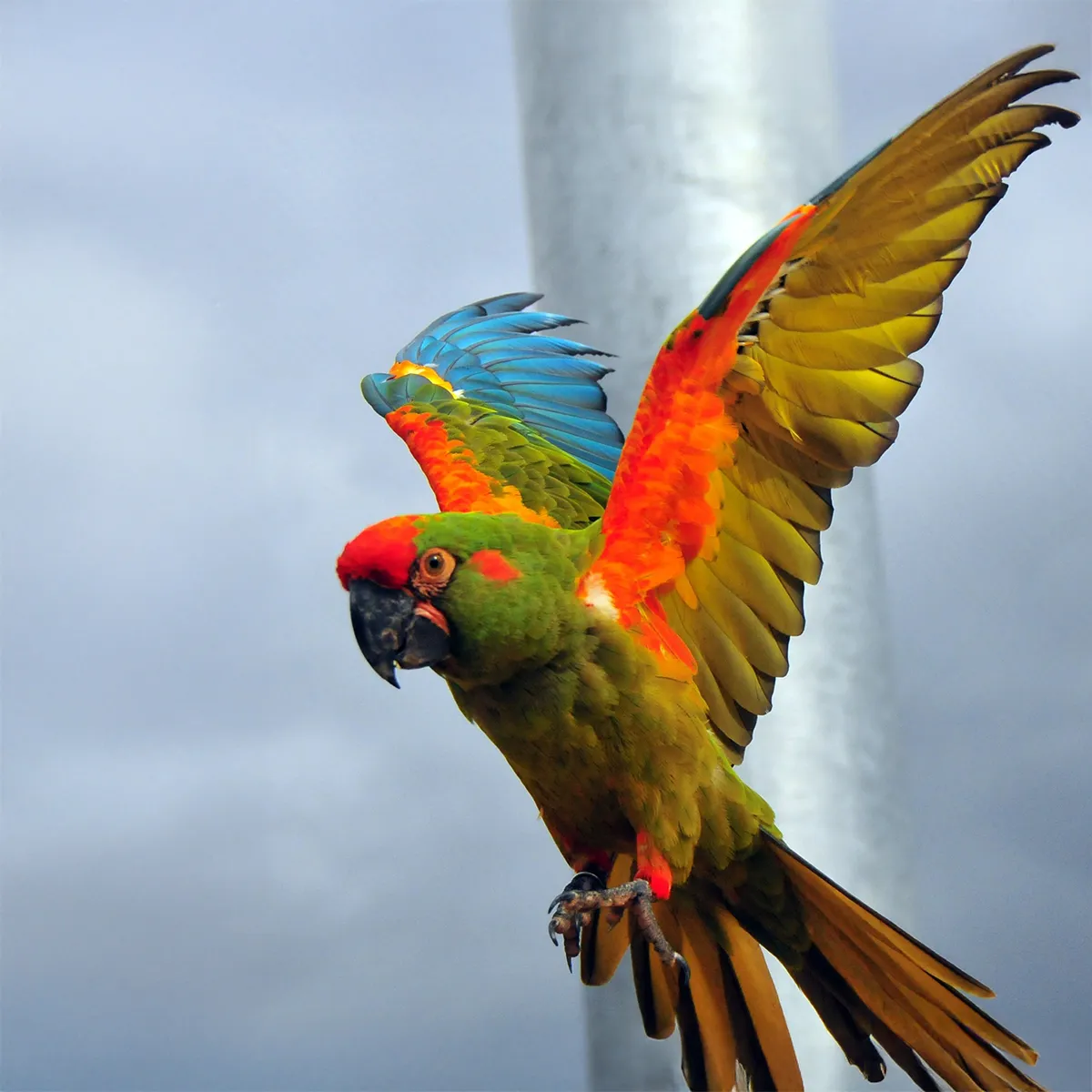
It is a bird belonging to the psittacidae family. It is native to Bolivia and lives in the semi-arid mountainous areas of the Andes. It feeds on fruit, seeds and leaves.
This macaw is listed in Appendix I of the Washington Convention and benefits from an European breeding program.
Retour au blog Partager : Facebook Twitter
Red-and-green macaw
Publié par Angélique le Tuesday 19 February 2019
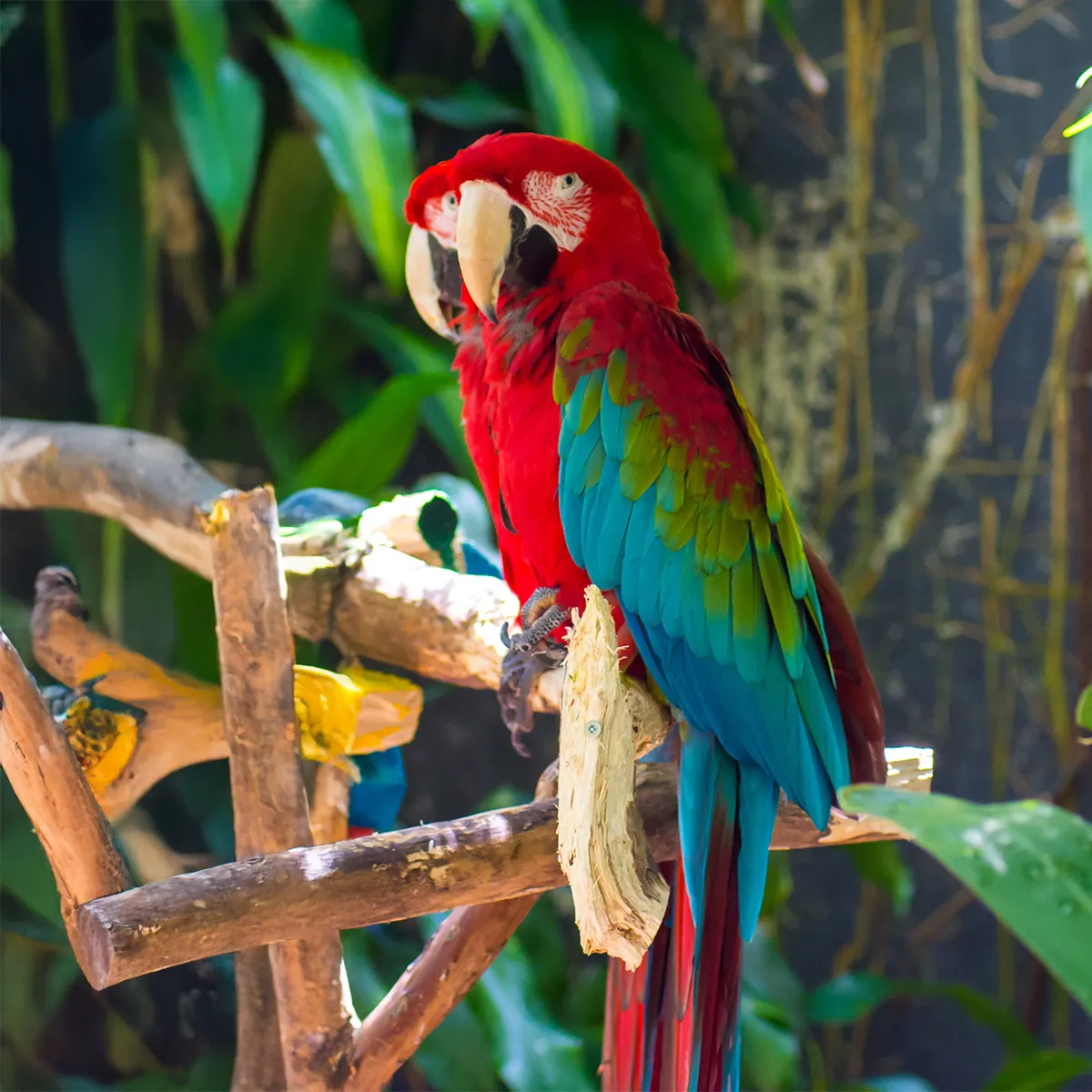
The red-and-green Macaw is a member of the Psittacidae family. It is native to Colombia, Venezuela, Bolivia, Brazil, Mexico, Paraguay and Argentina. It lives in the dry tropical forests of northern Ecuador and eats fruit, seeds and leaves. With rare exceptions, the Chloroptera macaw is not widespread throughout its range. Until recently, Guyana was the world champion in terms of the number of nestlings captured. Fortunately, since 1993, Guyana has banned commercial trade in this species. In Europe, it is listed in Appendix II of the Washington Convention.
Retour au blog Partager : Facebook Twitter
Rainbow lorikeet
Publié par Angélique le Tuesday 19 February 2019
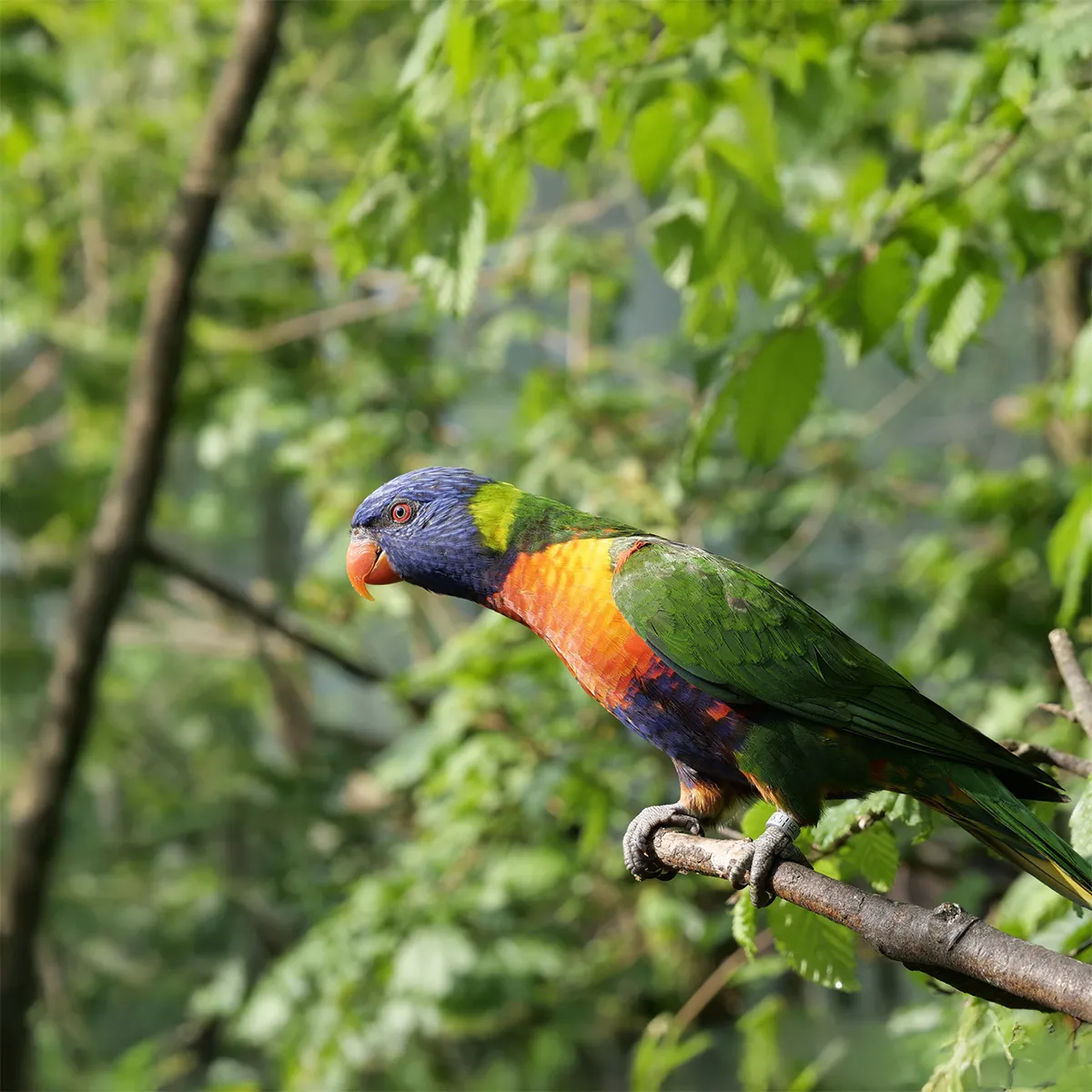
The rainbow lorikeet is a member of the psittacidae family.
Endemic to Oceania, it can be found in high and medium mountains, as well as mangroves. It feeds on seeds, fruit, flowers, buds and, above all, nectars, which it appreciates.
It has the particularity of having almost all the colors of the rainbow in its plumage. This is a very common bird. Locally, it can be very abundant. In some regions, it is the most common parrot. In places where it can benefit from flowering trees and fruit, it’s a species in full expansion. However, it has a very bad reputation for damaging orchards. In some parts of Australia, it is hunted for its meat, and its feathers are later used in ritual ceremonies. It is listed in Appendix II of the Washington Convention.
Retour au blog Partager : Facebook Twitter
Monk parakeet
Publié par Angélique le Tuesday 19 February 2019
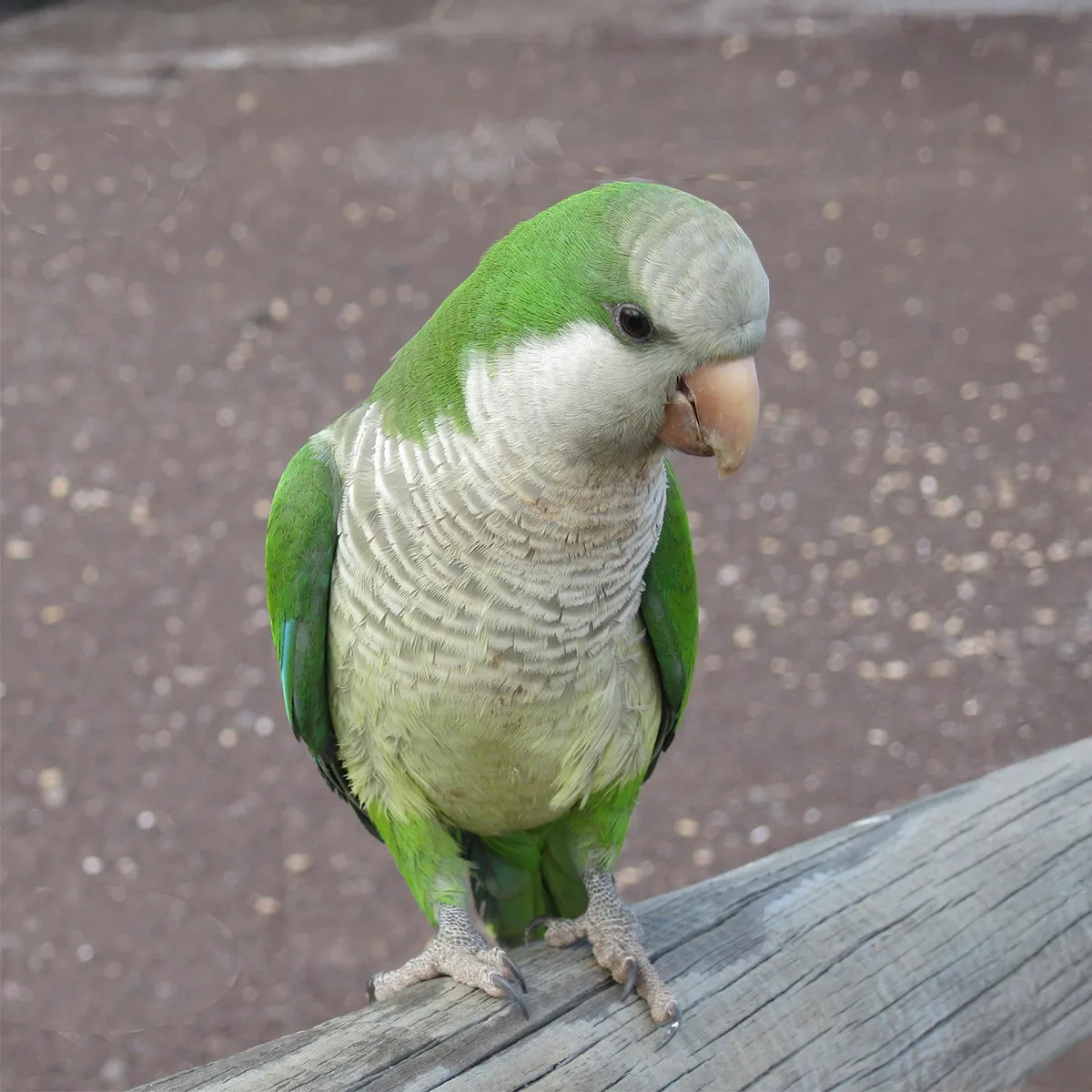
The monk parakeet, also known as the widow parakeet, is a member of the psittacidae family. Native to Brazil, Paraguay and Argentina, it lives in arid woodlands and feeds on fruit and seeds.
The monk parakeet is not globally threatened. On the opposite, it is common throughout its range.
Retour au blog Partager : Facebook Twitter
Australian king parrot
Publié par Angélique le Tuesday 19 February 2019
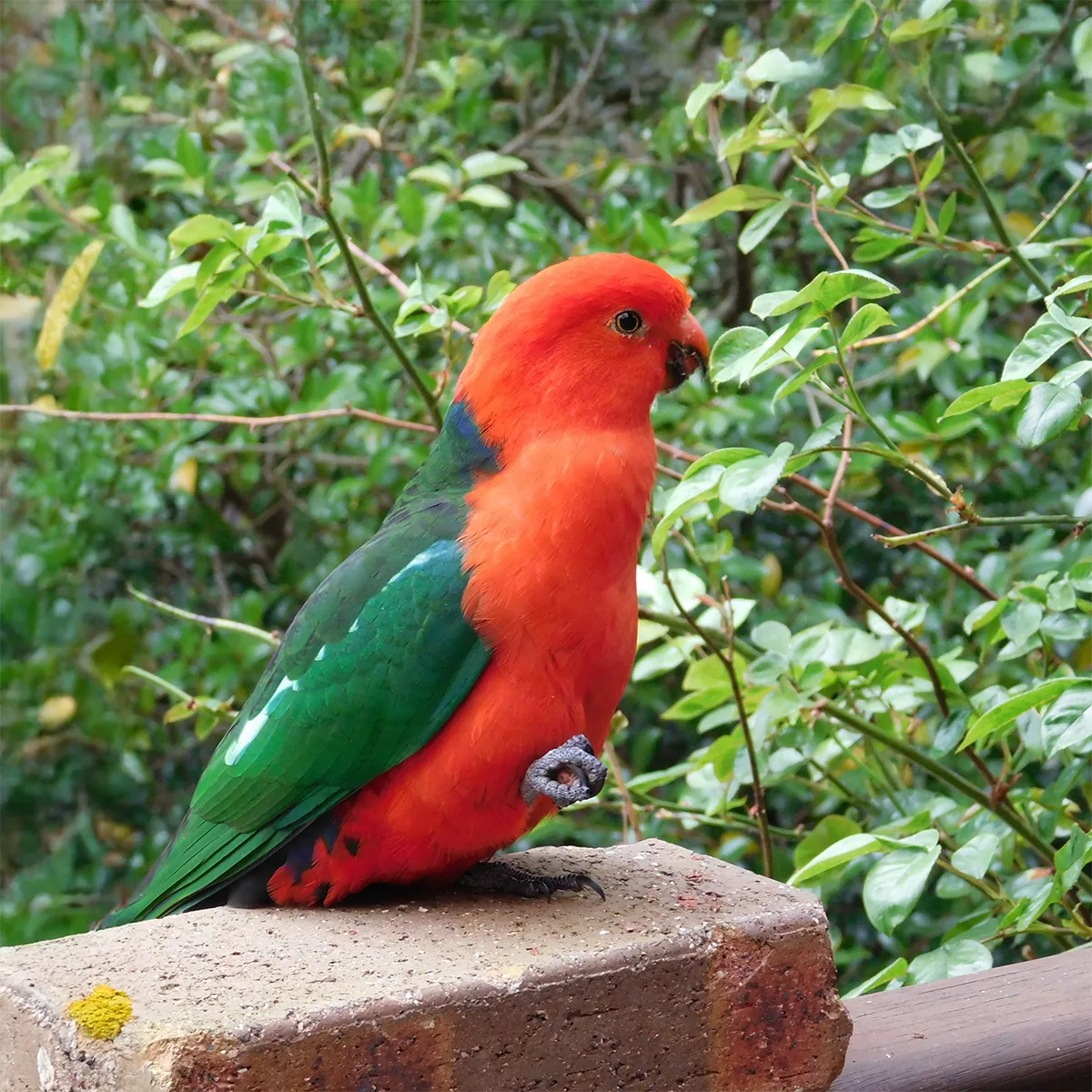
The Australian king Parrot is a member of the Psittacidae family.
Native to the east coast of Australia, it tends to live in eucalyptus woodlands, thick waterfront scrub or secondary forests, where it feeds on fruit and seeds.
The pair shows a difference in color. The photo shows a male. The Australian king Parrot is rare or low-density at the periphery of its range. Elsewhere, it is relatively common. It is not listed or protected in any way.
Retour au blog Partager : Facebook Twitter
Greater Vasa
Publié par Angélique le Tuesday 19 February 2019
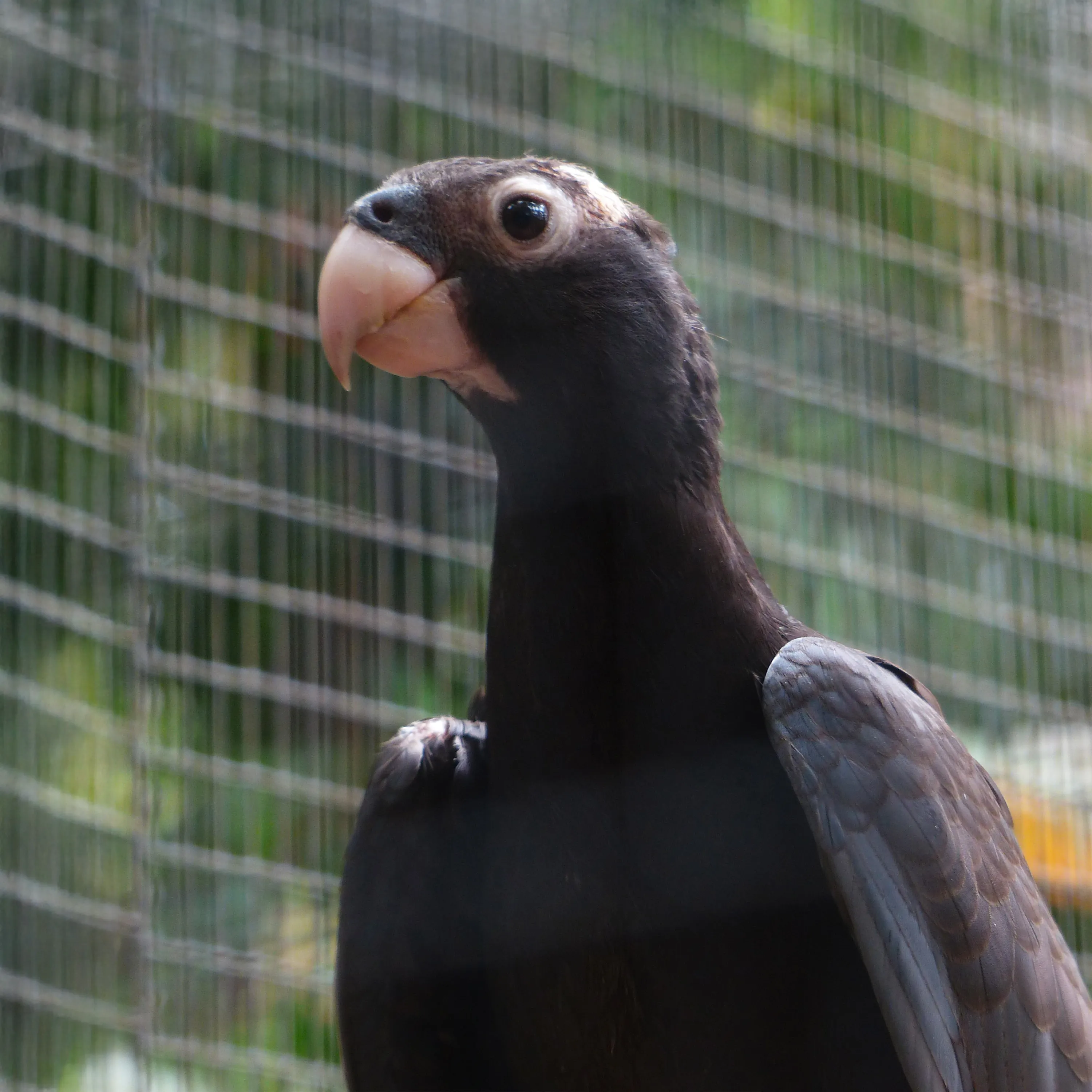
The Greater Vasa, also known as the Vasa parrot, is a species of bird in the Psittacidae family. This parrot inhabits Madagascar and the Comoros Islands. It was introduced to Réunion Island, where it is now apparently extinct. It is found in tropical, subtropical rainforests and deciduous forests, feeding on wild fruits, nuts, seeds and berries. It is not currently threatened, but is listed in Appendix II of the Washington Convention.
Retour au blog Partager : Facebook Twitter
Great green macaw
Publié par Angélique le Tuesday 19 February 2019
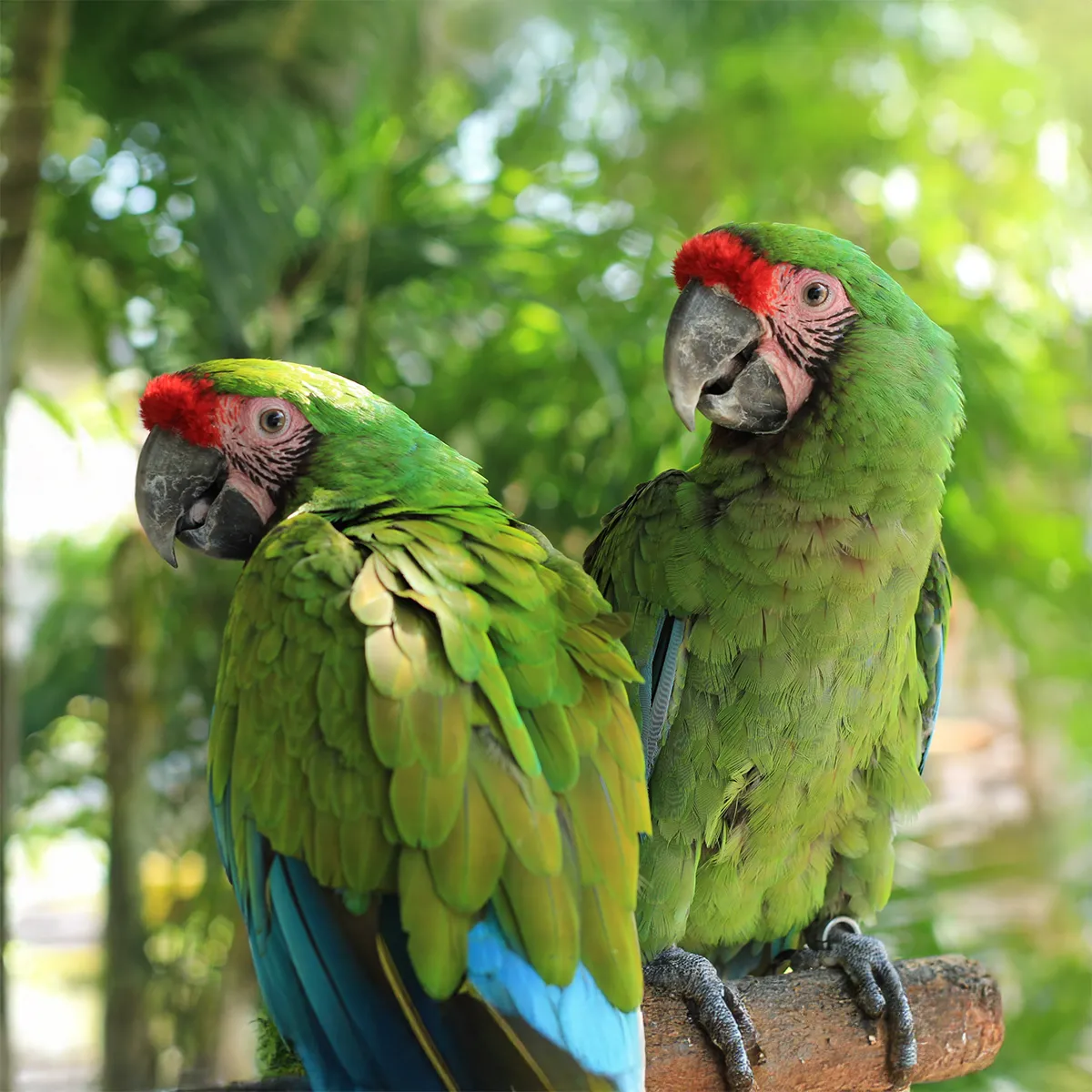
The Great Green Macaw is a species of macaw in the Psittacidae family. It lives mainly in humid rainforests or in the forested foothills of hills, but can be seen feeding in more open areas. It can be seen at altitudes of up to 1,000 meters in Honduras, Colombia and Ecuador. The cynomolgus macaw is a threatened species, classified as endangered in its natural state. Its decline is due to habitat loss caused by excessive deforestation. Today, most of the remaining habitat is protected by nature reserves and conservation programs. This species benefits from a breeding program.
Retour au blog Partager : Facebook Twitter
Ecuadorian red-lored amazon
Publié par Angélique le Tuesday 19 February 2019
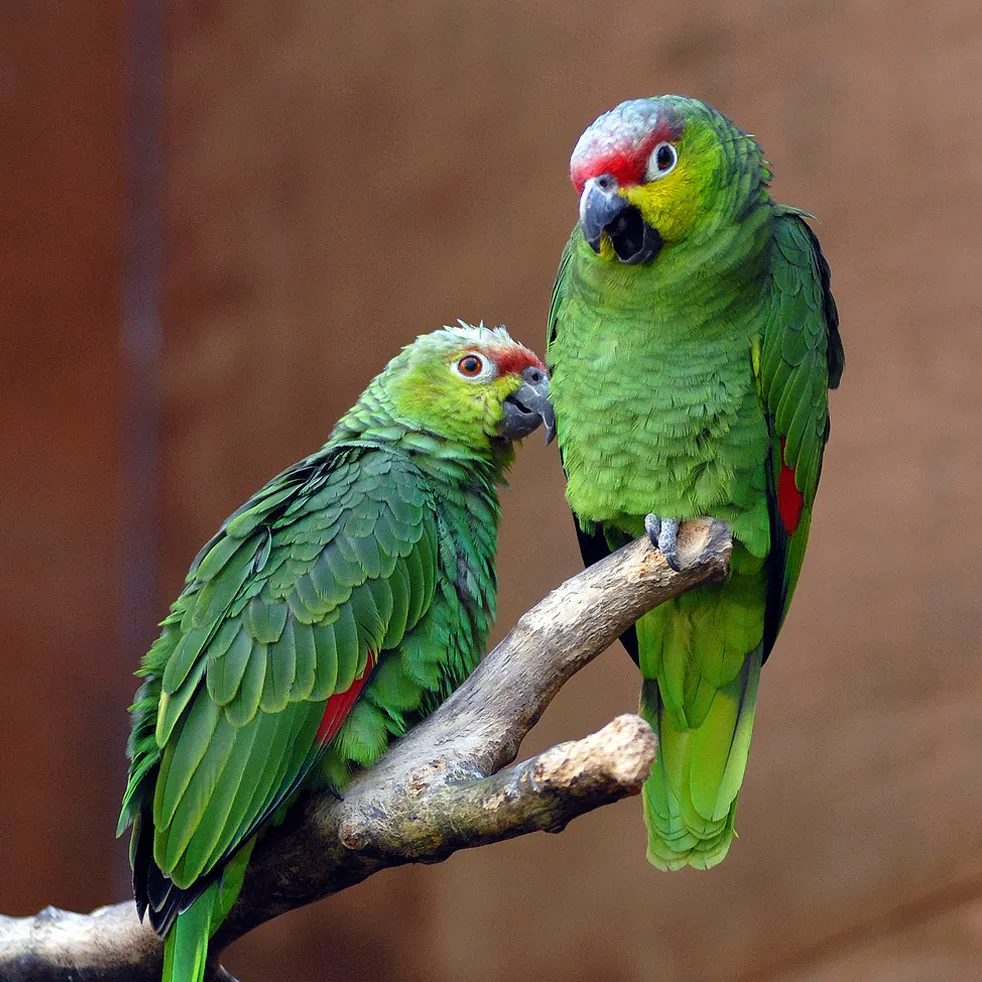
Endemic to western Ecuador, this bird lives in 2 endangered ecosystems: it spends the night perched in mangroves and feeds in tropical dry forests. These 2 ecosystems need to be close enough to allow the birds’ daily movements. It feeds mainly on fruits, seeds, berries, insects and nuts. The Ecuadorian red-lored amazon is classified as endangered on the IUCN Red List. Urbanization, habitat destruction and capture for the illegal pet trade threaten the Ecuadorian Amazon. It is part of a European breeding program.
Retour au blog Partager : Facebook Twitter
Moluccan eclectus
Publié par Angélique le Tuesday 19 February 2019
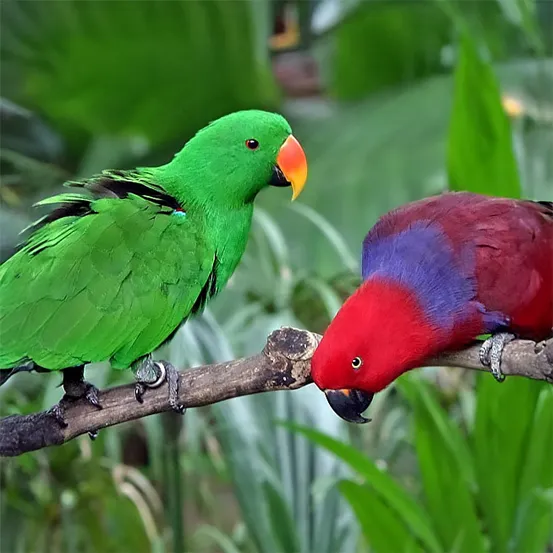
The Moluccan eclectus is a species of the psittacidae family. It is a special case among psittacids. It displays marked sexual dimorphism. Males have coral-colored beaks, green plumage and red and blue wing and tail feathers. Females have black beaks, red plumage on head and tail, and blue on breast and nape. Native to Chile, Uruguay and Argentina, it can be found in forests, woods, savannahs, mangroves and plantations. The Moluccan eclectus is very common, but over-harvesting in some regions has led to its becoming endangered. It is listed in Appendix II of the Washington Convention.
Retour au blog Partager : Facebook Twitter
Cockatiel
Publié par Angélique le Tuesday 19 February 2019
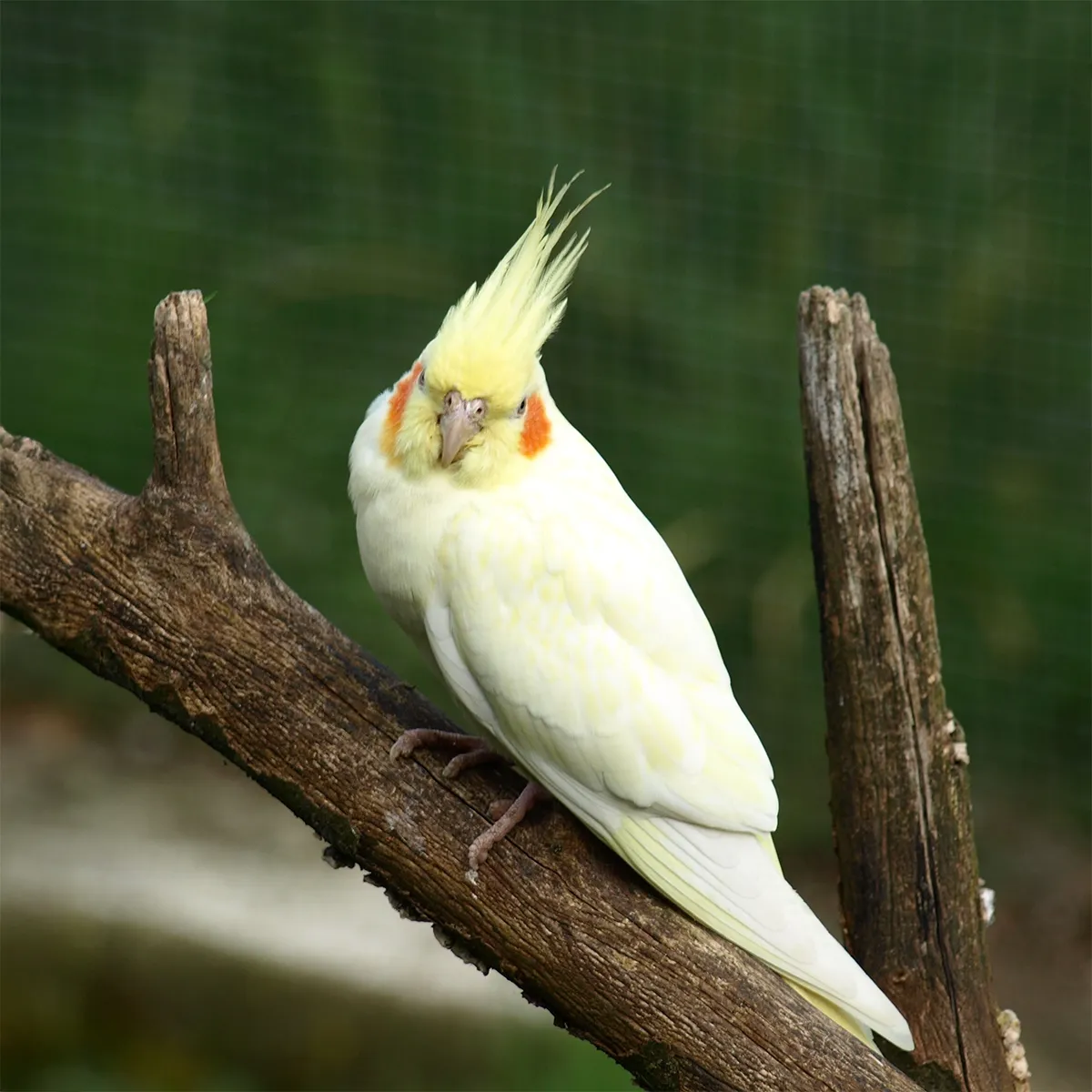
The Cockatiel is a member of the Cockatoo family, native to Australia. Similar in size to a small pigeon, it lives in groups of gregarious pairs. The wild population is not currently threatened.
Retour au blog Partager : Facebook Twitter
Burrowing parrot
Publié par Angélique le Tuesday 19 February 2019
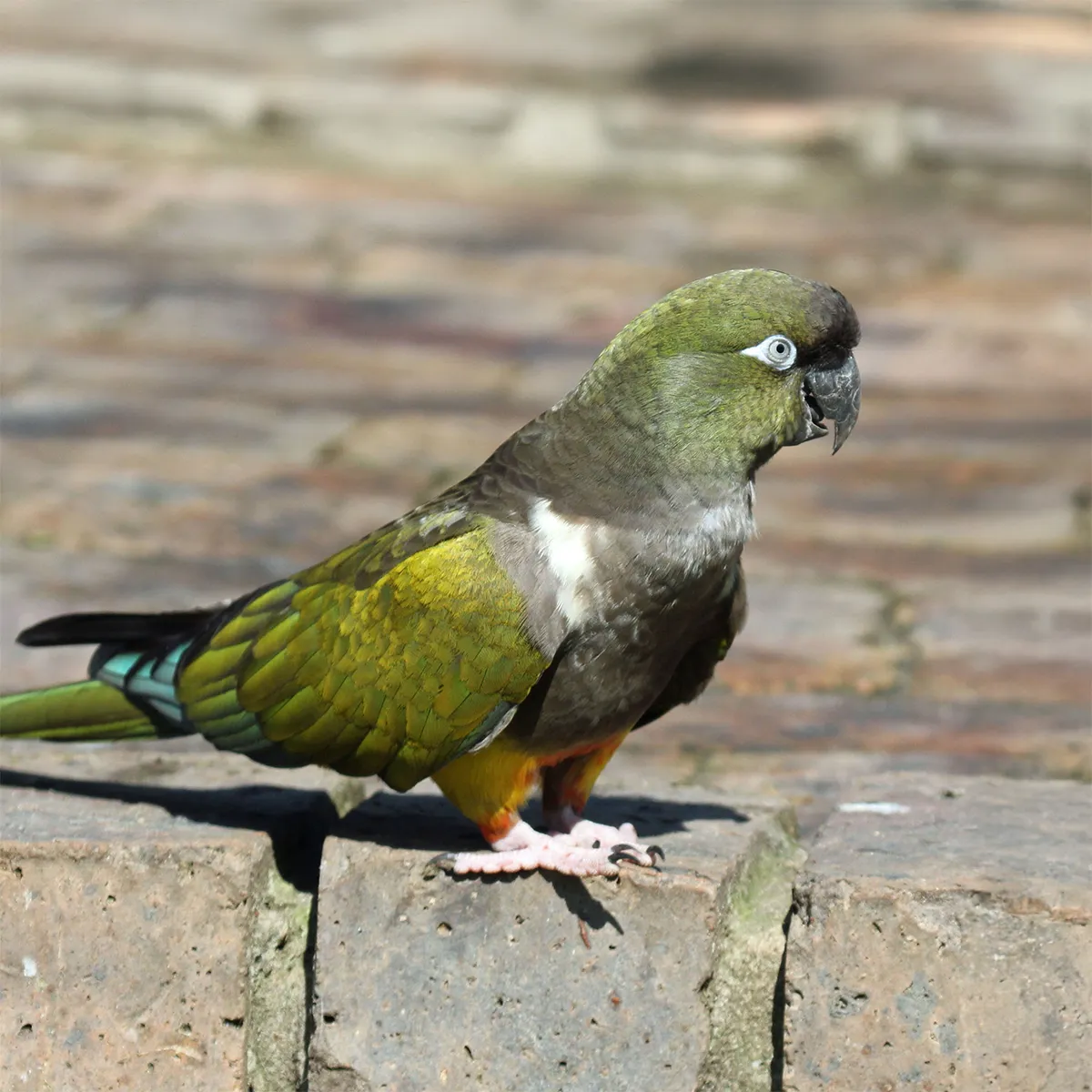
The burrowing parrot is a member of the Psittacidae family. It lives in Argentina, Chile and southern Uruguay on dry plains, mountains up to 2,000 meters, wooded savannahs and rivers. It feeds on fruit and seeds. This subspecies is currently in danger of extinction, and is classified in Appendix II of the Washington Convention.
Retour au blog Partager : Facebook Twitter
Blue-headed macaw
Publié par Angélique le Tuesday 19 February 2019
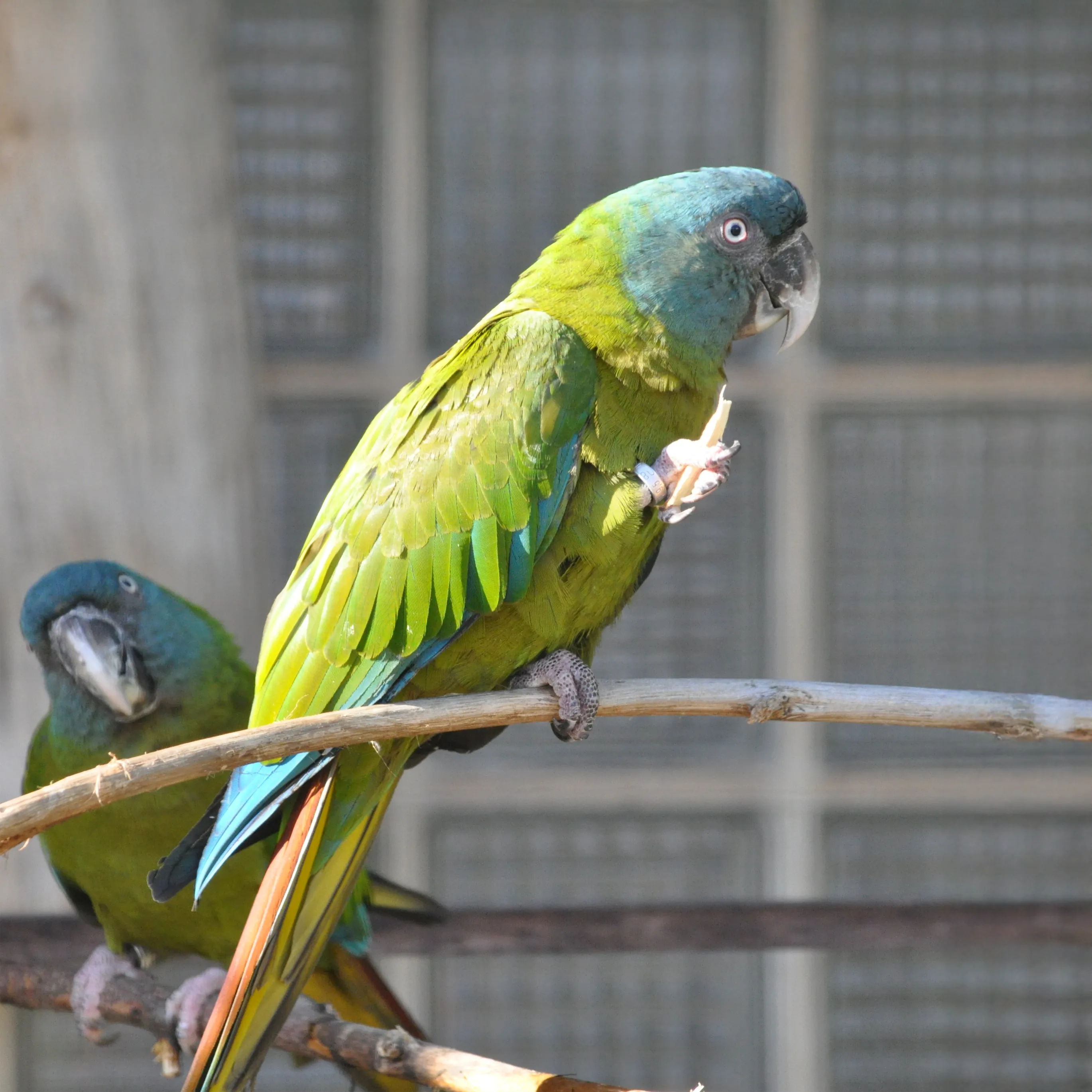
The blue-headed Macaw is a parrot in the Psittacidae family. It is distinguished by its green plumage, dark eye rings, yellow irises and blue head. It is small in size, measuring around 41 cm and weighing an average of 250 g. It is found in Bolivia, Brazil and Peru in tropical rainforests, watersides and marshes, where it feeds on berries, plants, insects and seeds. Unfortunately, this superb macaw is now highly endangered in its natural habitat, not least because it is caught. It was reclassified as “threatened” in 2007 in the IUCN Red List, Annex IA of the Washington Convention.
Retour au blog Partager : Facebook Twitter
Blue-crowned conure
Publié par Angélique le Tuesday 19 February 2019
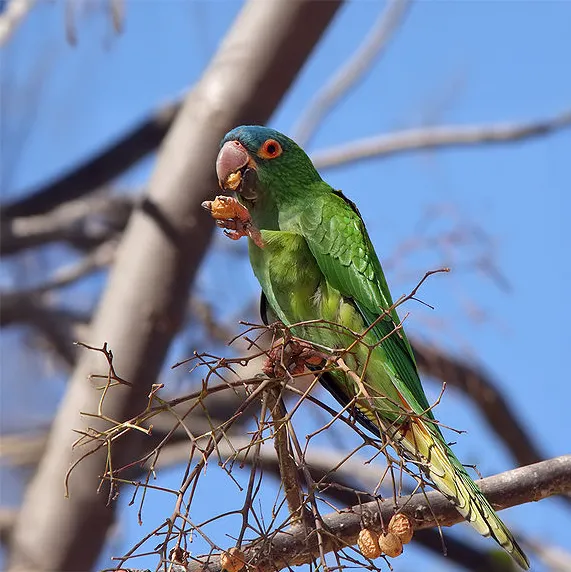
The Blue-headed conure is a species of the psittacidae family with predominantly green plumage. It is mainly found in South America in forests, dry woods, savannahs and palm groves, where it feeds on fruit and seeds. Appendix II of the Washington Convention.
Retour au blog Partager : Facebook Twitter
Blue-and-yellow macaw
Publié par Angélique le Tuesday 19 February 2019
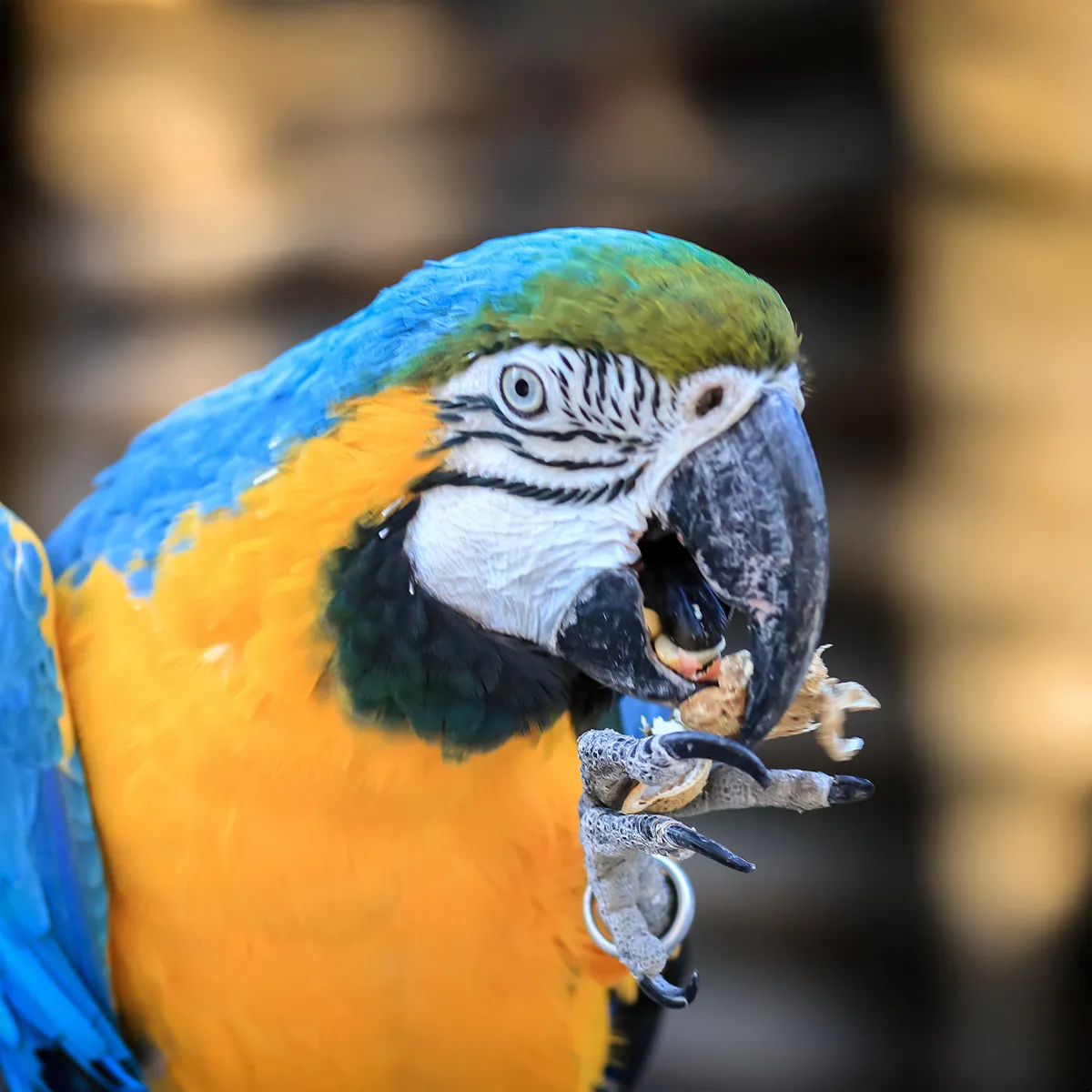
The Blue-and-yellow Macaw, also known as the Ararauna Macaw, is a large parrot easily recognized by the colors of its yellow and blue plumage. It measures around 90 cm in length and weighs around 1.3 kg. Native to the Amazon basin, Guyana, Venezuela, Peru and Bolivia, it lives in forests, savannahs, open areas, marshes and watersides, where it feeds on fruit, seeds and nuts.
This bird is protected by the Washington Convention (Appendix II) and the ministerial decree of May 15, 1986 listing protected bird species in Guyana.
Retour au blog Partager : Facebook Twitter
African grey parrot
Publié par Angélique le Tuesday 19 February 2019
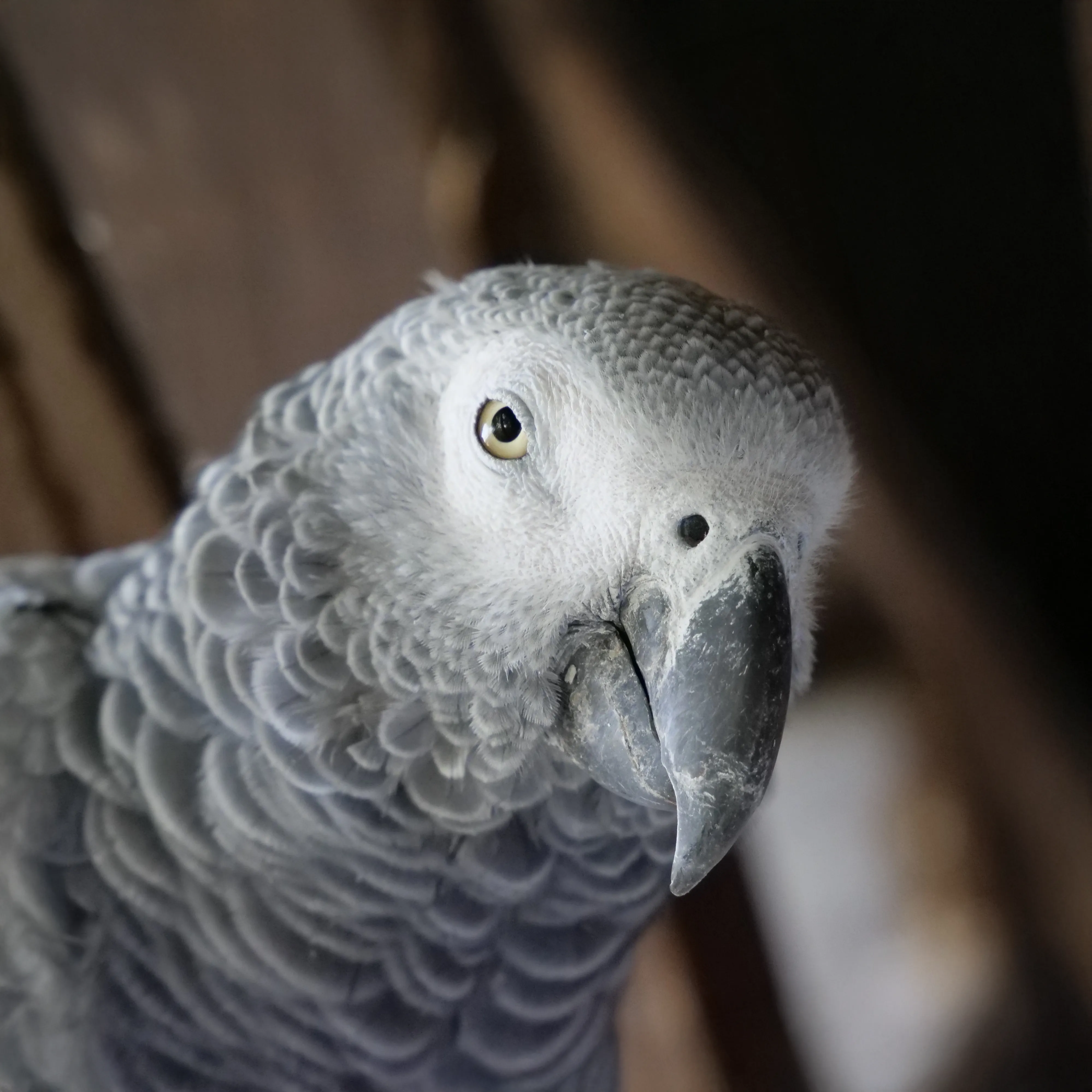
The African Grey Parrot is a species of bird in the Psittacidae family. It is the best talker among parrots. Native to Gabon, in central-western Africa, it weighs around 500 grams and feeds on seeds in forests and plantations. It was already a pet bird in ancient Rome. Today, the species is endangered and protected. Trade is now regulated. After 35 years in Appendix II (regulated trade) of CITES, the African grey has been moved to Appendix I, meaning that trade is now prohibited.
Retour au blog Partager : Facebook Twitter
Red-crested pochard
Publié par Angélique le Sunday 20 January 2019
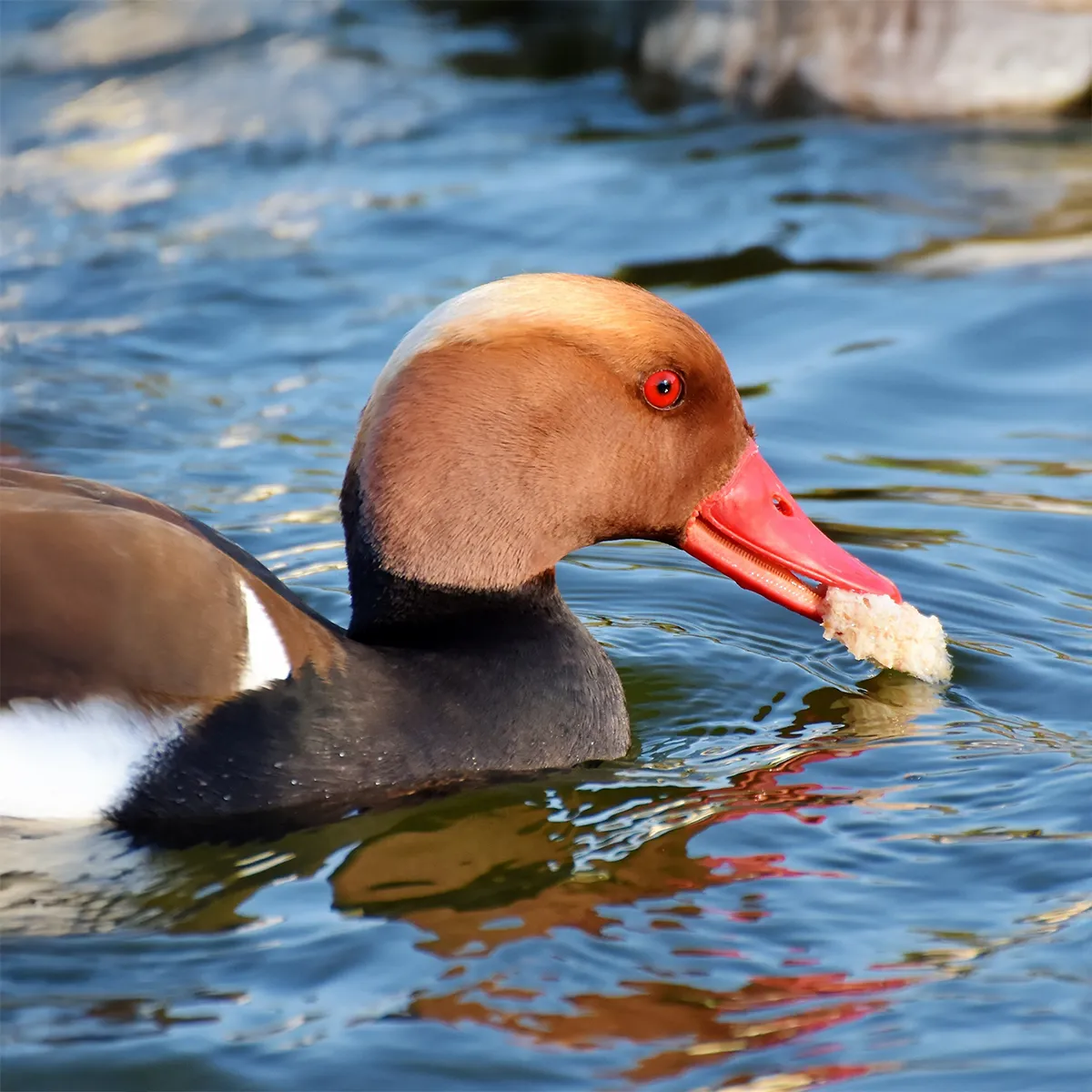
This duck, from the Anatidae family, is a remarkable diver with contrasting colors. Males and females are different. The male has a bright red head with yellow underparts. The neck, breast and belly are black. The white flanks contrast with the dark brown back. A white band crosses the shoulder. The beak is red, the legs orange-red. Females are more discreet: brown head, grayish-white cheeks, brown back, lighter underside. Native to Europe, they live in lakes and ponds. They feed mainly on aquatic plants, and to a lesser extent on invertebrates and small fish.
Retour au blog Partager : Facebook Twitter
Animal test EN
Publié par Adipso le Friday 11 January 2019
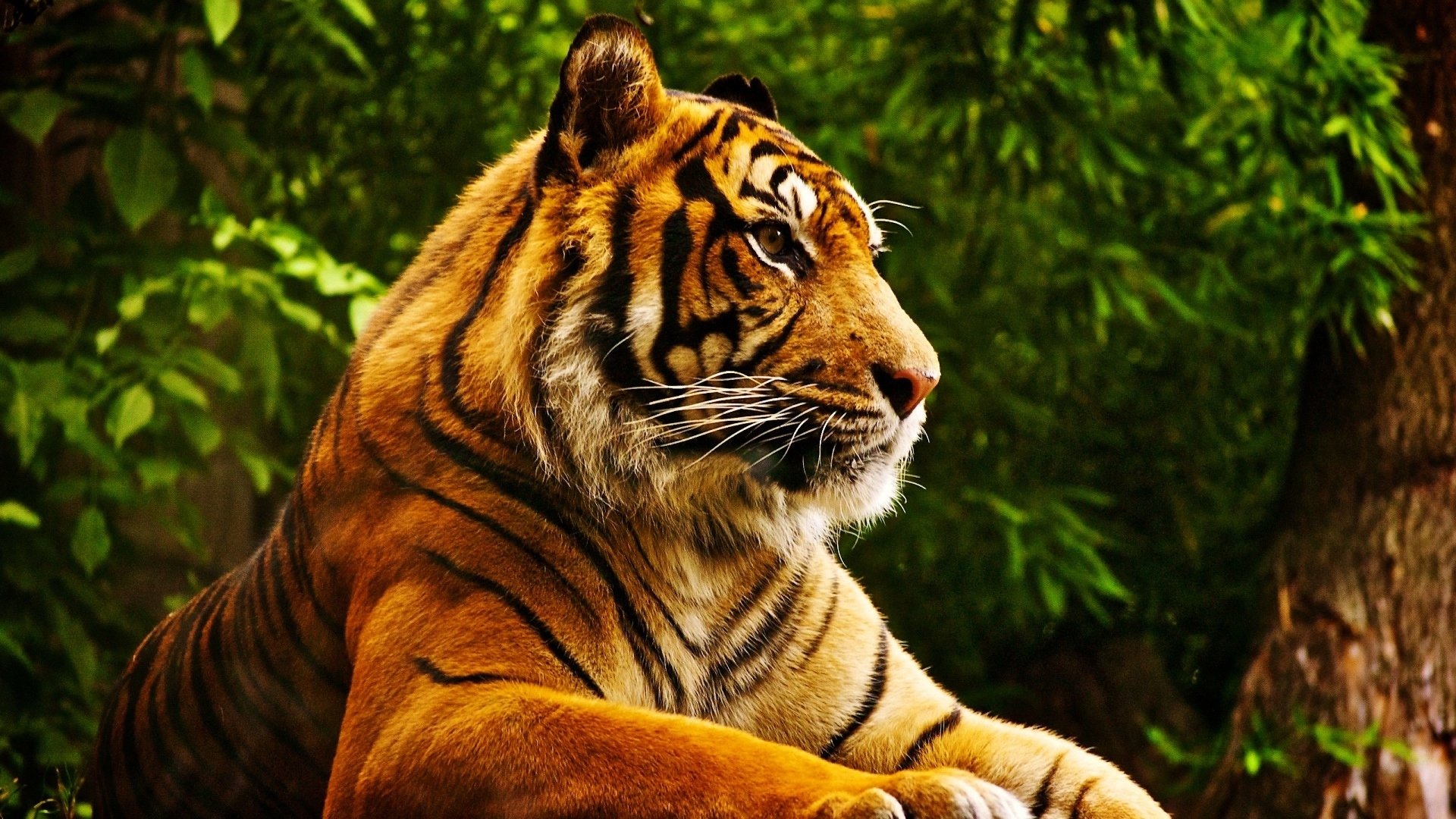
Retour au blog Partager : Facebook Twitter
